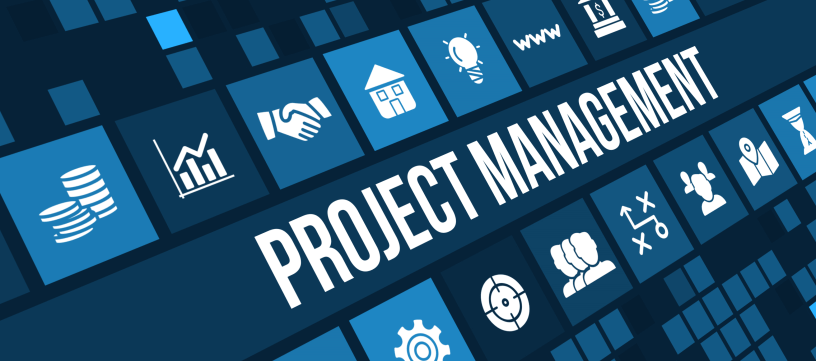Useful tips for integration into new projects
Project managers regularly face project acceptance at various phases from other project managers or companies. Typically, transmission time is limited: a couple of weeks or less. Whether this process goes smoothly depends on the phase of the project, as well as the project management system in which it was conducted.

First, the head goes round from the abundance of new information, people, connections and communications. There is a desire to understand all past and future tasks.
Before you begin the action, you should try to find out what the purpose of the project is. Explore similar projects. The easiest way to find them is through Google. So you will learn about the best practices in this field and broaden your horizons in this applied topic.
As soon as a general idea of the scope of the project is obtained, we can proceed to an in-depth study.
First of all, you should collect all available documents on the project.
In the event that some documentation is not enough, then it is worth developing it yourself, at least in general terms, without subtle details that will be difficult to take from the air.
First of all, you should be interested in the description of the system, its structure and features of the work. This will help to understand what parts the project consists of. It will also be clear which specialists can work on each part.
Information on technical support, test and production environments and basic development approaches will also be important.
All this can be described on 5-10 sheets of paper. But it is better to use a wiki-like system, since such documentation will be useful to all team members - not only the project manager.
When forming a list of documents describing the project and giving a private idea of it, you can use different sets and templates of descriptions.
It is important in one form or another to describe the following things:
If the team works efficiently, then most likely it has a streamlined system of actions and procedures that all developers follow. In this case, this nuance can not be controlled at first. However, it is advisable to create or supplement the instruction for organizing the team’s work on the project.

First of all, it is worth deciding which team you have and what tasks each of its participants solves. It’s good when the team is complete and can close the whole range of tasks from development to testing and release. Worse, when some specialists are involved irregularly or partially.
During revisions and planned work, the project manager should pay attention to the work methodology, the completeness of its use, and also specify the procedure for testing the results of work.
When all the tasks are in sight and at any moment of time, each member of the team can find out the current state of the project, it is much easier for the project manager to make decisions on his and other's work.
Visualization of work is most easily achieved using a task management system . Using the activities of backlog grooming, as well as its prioritization, you can create a steady workflow.
In addition, if all tasks will be carried out through a common project management system, it will be much easier for the project manager to collect information for reporting on the project and its labor costs.
When accepting a project, it is worth studying its applied topics, as well as creating effective communication channels with all participants.
Obtain or develop documentation that describes the business goals of the project, its structure, architecture and all possible requirements.
Audit the project, clarify and supplement as necessary the accounting of tasks, working hours and reporting on the project.
I hope these tips will help you easily integrate into the workflow and competently build teamwork. I wish you successful projects!

Four first steps
First, the head goes round from the abundance of new information, people, connections and communications. There is a desire to understand all past and future tasks.
- Be that as it may, the primary task of the project manager is to form effective communication channels with all project participants. Even if at the beginning it is not clear what to talk about with each member of the team, it is better to immediately write down their names, positions and contact information.
- Next, you should carry out an audit of the project, during which you will become more closely acquainted with the project and will be able to understand what state it is in.
- Next, you need to think about what needs to be done so that the project successfully closes this project. To do this, it is worth creating, evaluating and planning BackLog (task registry).
- As it becomes clear that for how long and in what mode you will do, you need to establish effective processes for reporting, alerts, revisions, testing, etc.
Acquaintance with the project
Before you begin the action, you should try to find out what the purpose of the project is. Explore similar projects. The easiest way to find them is through Google. So you will learn about the best practices in this field and broaden your horizons in this applied topic.
As soon as a general idea of the scope of the project is obtained, we can proceed to an in-depth study.
First of all, you should collect all available documents on the project.
In the event that some documentation is not enough, then it is worth developing it yourself, at least in general terms, without subtle details that will be difficult to take from the air.
First of all, you should be interested in the description of the system, its structure and features of the work. This will help to understand what parts the project consists of. It will also be clear which specialists can work on each part.
Information on technical support, test and production environments and basic development approaches will also be important.
All this can be described on 5-10 sheets of paper. But it is better to use a wiki-like system, since such documentation will be useful to all team members - not only the project manager.
Documentation
When forming a list of documents describing the project and giving a private idea of it, you can use different sets and templates of descriptions.
It is important in one form or another to describe the following things:
- The main goals and objectives of the project or its individual stages. Perhaps the description will not be detailed, but it will help to understand what is worth and what is not worth doing in this project.
- Business logic of the project. If any business logic is implemented in this project, then it is better to have a description of it. A characterization in the form of text or a block diagram will be especially useful.
- Systems of interaction of external and internal integrations. If our project has any integrations, then it is necessary to have descriptions for each of them. At the very least, you need to know the purpose of the integrations and have the API documentation on hand.
Work organization
If the team works efficiently, then most likely it has a streamlined system of actions and procedures that all developers follow. In this case, this nuance can not be controlled at first. However, it is advisable to create or supplement the instruction for organizing the team’s work on the project.

First of all, it is worth deciding which team you have and what tasks each of its participants solves. It’s good when the team is complete and can close the whole range of tasks from development to testing and release. Worse, when some specialists are involved irregularly or partially.
During revisions and planned work, the project manager should pay attention to the work methodology, the completeness of its use, and also specify the procedure for testing the results of work.
When all the tasks are in sight and at any moment of time, each member of the team can find out the current state of the project, it is much easier for the project manager to make decisions on his and other's work.
Visualization of work is most easily achieved using a task management system . Using the activities of backlog grooming, as well as its prioritization, you can create a steady workflow.
In addition, if all tasks will be carried out through a common project management system, it will be much easier for the project manager to collect information for reporting on the project and its labor costs.
Output
When accepting a project, it is worth studying its applied topics, as well as creating effective communication channels with all participants.
Obtain or develop documentation that describes the business goals of the project, its structure, architecture and all possible requirements.
Audit the project, clarify and supplement as necessary the accounting of tasks, working hours and reporting on the project.
I hope these tips will help you easily integrate into the workflow and competently build teamwork. I wish you successful projects!
All Articles